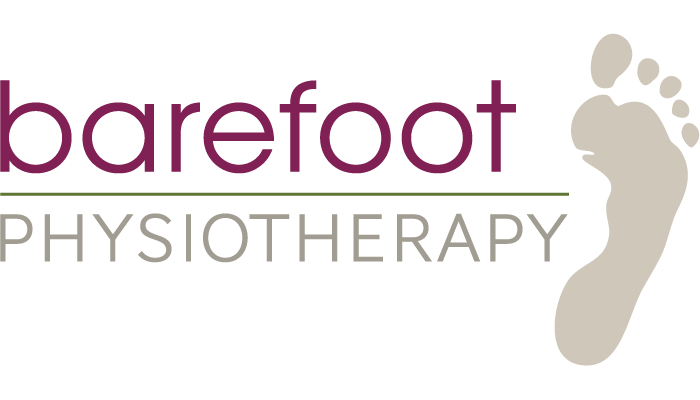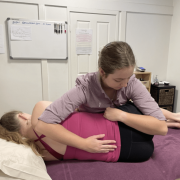
Should I go to Emergency or Physio for my Lower Back Pain?
An acute episode of severe lower back pain can be very debilitating and often people are unsure of where to go to get help. Often people struggle to identify if the type of pain they are experiencing means they should visit the GP, Physio or in some cases the emergency department. Therefore, this blog aims to help you identify through your symptoms the best first step for you. If you are ever unsure please call your local GP or Physio ...
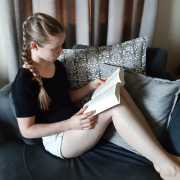
How to stop back or neck pain when reading
Written by Caitlin D - Physiotherapist and avid reader. As physiotherapists our general advice tends to be the same ….bodies love to move! Your physiotherapist will typically recommend frequent position changes regardless of the type of activity you are performing – reading is no different! It’s easy to get caught up in a story when reading, only to re-emerge from your book to find stiffness in your neck or back. Holding one type of position for a prolonged period of ...
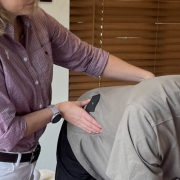
Top tips for recovering from a cycling injury
Having an injury is frustrating, especially when it takes you away from your favourite activities such a jumping on the bike and getting out for a ride. Unfortunately, they can’t always be avoided, but there are some things you can do to streamline the recovery process and give yourself the best chance of getting back on the bike as soon as possible. Here are the top tips for recovering from a cycling injury. 1. Gentle Movement We often think that ...

Inclusive LGBTQIA + Physio in Brisbane
Written by: Sal (she/her) – Founder of Barefoot Physiotherapy. Truly inclusive Healthcare is a fundamental Human Right and underpins the Values of our clinic. At Barefoot we believe we exist to empower people to confidently live the lives they choose. Our Values at Barefoot Physiotherapy are: To us you matter Commitment to excellence Bring the Fireworks! Meeting the Needs of the LGBTQIA+ Community I recently asked our clients to do their annual details update (so we know where to send ...
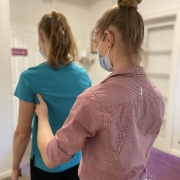
Why do I have rib pain?
Why do I have rib pain? Rib pain is a common form of musculoskeletal pain. It refers to any pain that is experienced in the ribs, the rib joints or the muscles between them. Due to the proximity to the lungs, it can cause significant distress and or difficulties with breathing. This blog will help explain where your rib pain may be coming from and how physiotherapy can potentially help. Rib anatomy Knowing the anatomy of the rib cage is ...
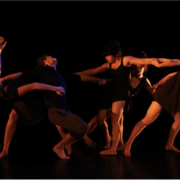
Body weight Strength training for dancers
Written by Dan Jang: Physiotherapist and Urban Hip Hop Dancer More and more professional dance studios are implementing body weight strength training for dancers and for a good reason. There has been a lot of focus on stretch and mobility for warm ups prior to dancing but the paradigm is shifting to strength as more and more evidence shows that it helps to prevent injuries. Here are some body weight strengthening exercises for dancers that you can incorporate into your ...
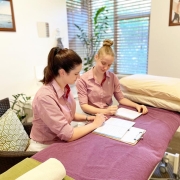
How to Find the Right Physiotherapist for you!
Written by Sal – Director and Founder of Barefoot Physiotherapy in Brisbane. Est 2012 How to find the right physiotherapist for you! I’m going to start this blog by saying we are not for everyone, and that’s ok. Our ideal clients have a joy for life, are enthusiastic and interested. Interested in themselves, others and the world. You may not be able to do what you want right now and are looking for someone to walk beside you on a ...
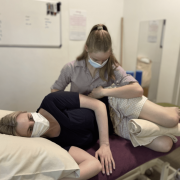
Should I see a Physiotherapist or a GP?
Written by: Sal – Founder and Director of Barefoot Physiotherapist. Should I see a Physiotherapist or a GP? When you are in Pain it can be tricky knowing whether it is best to see a Physiotherapist or the GP. While every situation is different, I’m going to do my best to help you with that decision. TLDR: if in doubt ring the Physio clinic as it is more than likely you’ll be able to speak to a physio and they’ll ...

What is Open style choreography?
Written by Dan Jang: Physiotherapist and Dancer (yes I'm in these photos!) A lot of people might be unfamiliar with the term yet they are probably exposed to this dance style on the media and entertainment without really thinking about it. Open Style Choreography puts an emphasis on learning, practicing and executing pieces of choreography. Since 2020 there has been a lot of movement to coin Open Style Choreography instead of Urban as it is deemed a derogatory term. Open ...

Physiotherapy for Golf
Golfers know that the golf swing is a full body movement. It was said by pro golfer Tom Armour that golf is an awkward set of bodily contortions designed to produce a graceful result. We can’t agree more. That's why physiotherapy for golf is so important. What we frequently hear from golfers struggling with their game include: Stiffness in the body that is restricting your golf swing Losing your balance at the end of a swing Pain and soreness in ...
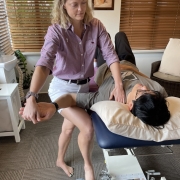
How Physio Can Help Nerve Irritation
What is Nerve Irritation? Nervous tissue is designed to be able to smoothly glide in and around the interface of our muscular and skeletal systems. Our bodies are designed to move, therefore our nervous system needs to move with us. When there is nerve irritation, there can be restrictions to our normal freedom of movement. Therefore, physio can help with nerve irritation. The nervous system underpins all our bodily functions, and one of its primary roles is that of protection ...

Physiotherapy Management of Sciatica
What exactly is sciatica? Sciatica refers to an irritation of the sciatic nerve (a nerve that exits at the low back joints, and travels through the gluteal region, back of the thigh and down into the leg). It can present as radiating pain, tingling/numbness, and/or muscle weakness down the leg (usually just one side). This irritation may arise from: a) an inflammatory irritation of the nerve b) direction compression of the nerve. For example: from a disc bulge, spinal canal ...
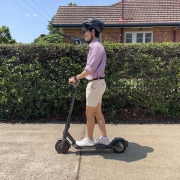
Taking Care of your Body while Scooting
Hey everyone it’s Dan from Barefoot Physiotherapy. I want to share my personal tips and experience with electric scooters. I scooter to work every day and have noticed that there are a few things you can do to keep your body happy while you are riding a scooter. 1. Top tips for riding a scooter Safety: Make sure you have a helmet on and double check that your brakes and lights are working (especially if you are using a scooter ...
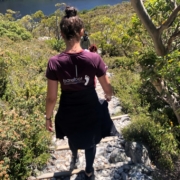
A Physio’s tips for Bush Walking
Lucky for us living in Australia, there are endless bush walks for us to revel in. Recently, while on a bush walk to spot Koalas, I found myself feeling rather fatigued halfway through with a neck ache at the end of it. I’m here today to share with you how you can look after yourself while bush walking, and some tips on spotting animals. Preparing for a bush walk Make sure you get a good night’s sleep the day before ...
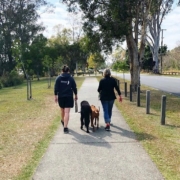
Return to Walking
The widespread benefits of gentle aerobic exercise are well known – improved heart health, improved sleep quality, improved mood, the list goes on. The current recommendations are for 30 minutes, 5 times a week (and 2 days of strength or resistance training). So what do you do if you aren’t able to make it that far? Many people would do a 30 minute walk without a second thought, but if you are recovering from an injury, illness or period of ...
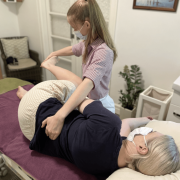
How can Physiotherapy help Back Pain?
What is back pain and how can physiotherapy help back pain? Back pain can refer to any pain that is felt anywhere on the back of your torso. It may be the upper part near the shoulder blades (upper or midback pain) or lower down near the hips (lower back pain). It may be central, in close to the spine or off to the sides. You may also experience it on both sides of the spine or on just one ...
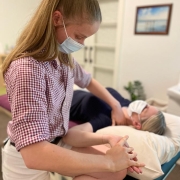
What Is Nerve Pain?
Nerve pain is a common condition affecting many people. It can result in significant discomfort and impact on daily life if not treated. It can be the result of a number of causes, may of which can be improved with physiotherapy. What does nerve pain feel like? Nerve pain or nerve irritation can present with a variety of symptoms. Tingling or pins and needles sensation – can be anywhere but commonly in the leg or arm Burning sensation – can ...

Activity Pacing
Activity pacing is a vital component of physiotherapy management for chronic conditions. It is an approach that involves balancing activities throughout the day to prevent overexertion and conserve energy. This technique is particularly useful for individuals who experience chronic pain or fatigue, as it can help manage symptoms and improve overall function. In this blog, we will explore the benefits of activity pacing and how it can be implemented in physiotherapy management. The Benefits of Activity Pacing Activity pacing can ...
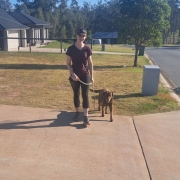
Top Tips for Walking your Dog
Walking your dog is a great form of exercise, no equipment needed; just you and your legs and off you go. Just as walking is a great form of exercise for us, a regular walk is also important for the health of your dog. It helps to maintain physical health, and also be stimulating for their senses as they check out the sights and smells in the environment. Like any form of physical activity, we want you to best take ...
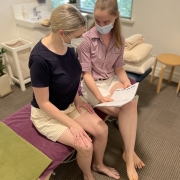
Long Covid
Long COVID is a condition in which individuals continue to experience symptoms even after the initial recovery period from COVID-19. These symptoms can include fatigue, shortness of breath, difficulty concentrating, joint pain, and many others. Physiotherapy can be an essential component of the multidisciplinary approach to managing long COVID. What is Long-Covid? The “Long COVID” official case definition from the World Health Organization (WHO) is: Post COVID-19 condition occurs in individuals with a history of probable or confirmed SARS CoV-2 ...
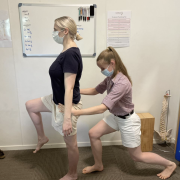
Exercises for Lower Back Pain
A very important part of lower back pain management is exercise prescription. Exercises for lower back pain can be used to improve a variety of potential causes of your back pain. These can include reducing stiffness in the area, improving motor control (activating the correct muscles), improving your strength in the lower back region and associated other areas. With any back pain, it is ideal to consult your Physiotherapist to have a treatment plan individualised to your injury. If you ...

TMJ Exercises
You may have already seen our jaw releases, which can be very helpful to relieve tension in the jaw and give quite immediate relief. There are additional TMJ exercises for motor control and strength that your physiotherapist may give you. These TMJ exercises can help to reduce likelihood of the jaw muscles tightening back up and to provide ongoing relief from your jaw muscle/joint pain. TMJ Exercises: Resting jaw position If we have a tendency to habitually hold tension in ...

Physiotherapy for Headaches
Physiotherapy for headaches often involves a combination of manual therapy techniques to reduce nerve irritation present in the upper-cervical region, and improve neck and upper body range of movement. In addition exercises can be helpful in improving the strength of the neck and surrounding muscles. This can help to reduce the build up of tightness in the area. Our brains are really good at ignoring musculoskeletal pain, especially when it has happened slowly over time or remains the same every ...
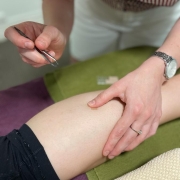
Should I try Dry Needling?
Here at Barefoot Physio we use a variety of techniques to get the best results for our clients. We often incorporate dry needling as part of our treatment plan because it has a wide variety of benefits. This is always done in consultation with our clients. In this blog, we’ve covered some of the most common questions we get about needling to help you work out if dry needling is right for you. What is dry needling? Dry needling involves ...
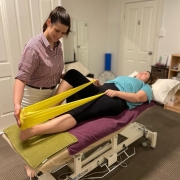
What is Hypermobility
Hypermobility is present in up to 15% of the population in one form or another. For the general public, hypermobility most commonly refers to general joint hypermobility (or an increased range of joint movement). Being extra flexible is an advantage in activities such as swimming, dancing or gymnastics. Most flexible people don’t experience pain or symptoms due to their flexibility. However, being “flexible” or “double-jointed” is only one part of the large spectrum of hypermobility conditions. These conditions range from ...
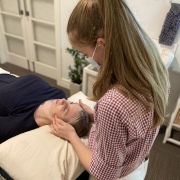
Physiotherapy for TMJ
What Is TMJ? Have you ever wondered if something is wrong with your jaw, or asked yourself “why is my jaw clicking?” Perhaps you have been told by your doctor or dentist that you have something called “TMJ dysfunction.” What does this actually mean? And how can Physiotherapy help your TMJ ? What is TMJ dysfunction? First, to answer this question, we need to answer a different question: “what is the TMJ?” TMJ stands for temporomandibular joint (no wonder we ...
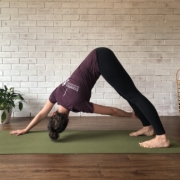
What Is Proprioception?
The six sense! What is proprioception? Proprioception is the way that we know where our body is in space or in relation to other body parts and whether a body part is still or moving. This information comes from sensory receptors in the skin, joints and muscles that feed information continuously to the brain. Different tissues have different receptors, for example Golgi Tendon Organs are found in all tendons and give information about tendon stretch or muscle contractions, while Pacinian ...
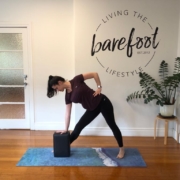
Yoga with Hypermobility
Hypermobility can be a complex condition to manage and there are multiple ways that symptoms can be managed. A large part of management for hypermobility is movement. People who are more flexible are often drawn to activities that their flexibility gives them an advantage. One that we see all the time is yoga. It’s not uncommon to hear the phrase “but I can’t do yoga, I’m not flexible enough”. The assumption is only flexible people can do yoga, and they ...
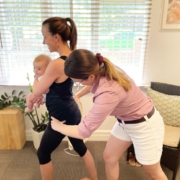
Physiotherapy for Incontinence
Urinary continence is the ability to fully control your bladder movements; i.e. there is no leaking. Therefore, urinary incontinence is defined as an involuntary loss of urine. Whilst urinary incontinence can be common it isn’t normal and should be addressed to help people regain a sense of control over their bodies. Physiotherapy for incontinence can be a great help in improving symptoms. To understand how physio can help your incontinence it is important to understand the type of incontinence. The ...
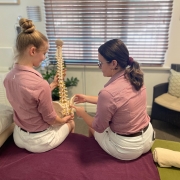
Pelvic Floor Physio is Important for Everyone
Pelvic Floor Physio for all populations Everybody has a pelvic floor. There is often a lot of discussion around pelvic floor for women, given its importance in pregnancy and childbirth. However, pregnancy is just one of many times the pelvic floor needs extra attention as pelvic floor dysfunction may be implicated in many other populations – including men and women who have never been pregnant. Pelvic Floor Physio can help everyone; as it can focus on activating and strengthening this ...
What’s the Next Step?
To find out more simply call
1300 842 850
You can also book an appointment online via the link below.
